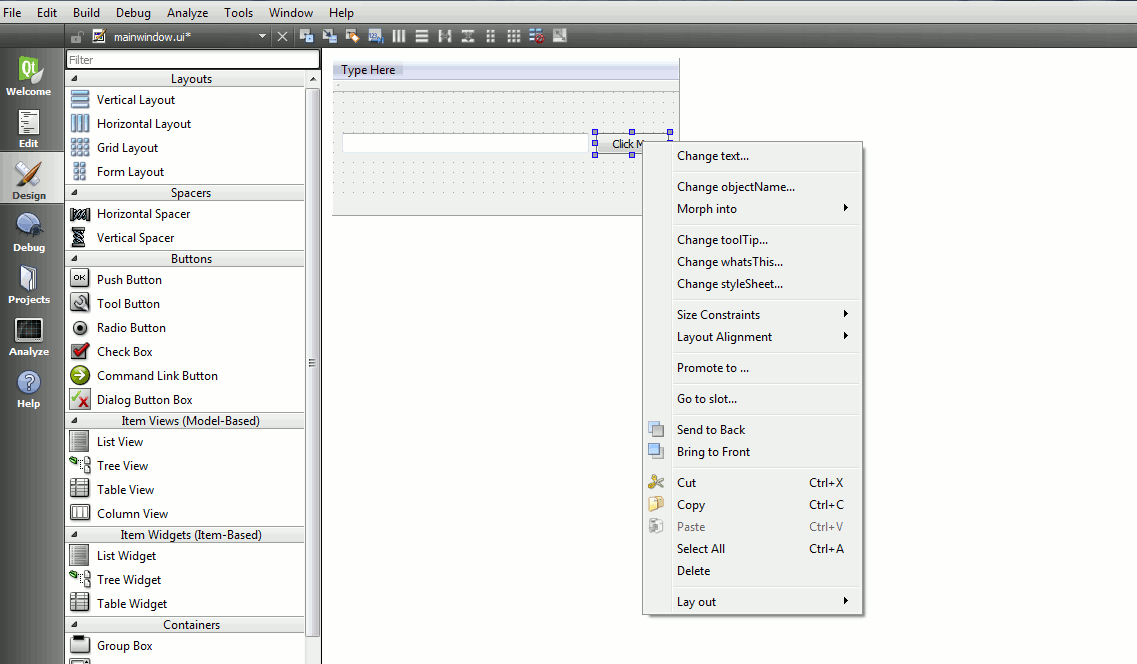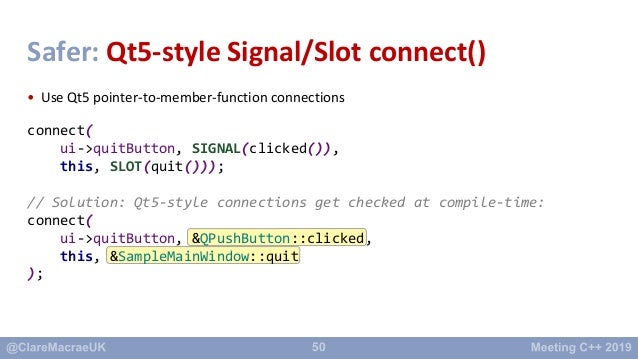Qt5 Signal Slot Connection
Represents a handle to a signal-slot (or signal-functor) connection. It can be used to check if the connection is valid and to disconnect it using QObject::disconnect. For a signal-functor connection without a context object, it is the only way to selectively disconnect that connection. Represents a handle to a signal-slot (or signal-functor) connection. It can be used to check if the connection is valid and to disconnect it using QObject::disconnect. For a signal-functor connection without a context object, it is the only way to selectively disconnect that connection. `signal.connect(somthing slot)` means that make a connection between signal & slot. `signal.emit(object)` means that to emit the connected signal. Because you have connected textActivated(signal) with lineEdit.setText(slot), so, if you set the currentText for object when it is emitted, the setText catch the object.If you connect the signal to.
Back in the old days, signals and slots connections were set up for compile time (or even run time) manually, where developers used the following sentence:QtReslot is a Clang plugin that converts string-based signal/slot connections to the new Qt5 syntax, enabling compile-time connection checking. It is most useful for large, old projects where such changes can quickly require a huge amount of time. Qt/C - Tutorial 073. Signals and slots. Connecting Slots to Overloaded Signals in the Qt5 Syntax. Quite a frequent problem when working with signals with slots in Qt5, according to my observations on the forum, is the connection of slots in the syntax on the pointers to signals having an over.
this is, we stated the sender object's name, the signal we want to connect, the receiver object's name and the slot to connect the signal to.

 Now there's an automatic way to connect signals and slots by means of QMetaObject's ability to make connections between signals and suitably-named slots. And that's the key: if we use an appropriate naming convention, signals and slots will be properly connected without the need to write additional code for that to happen. So by declaring and implementing a slot with a name that follows the following convention:
Now there's an automatic way to connect signals and slots by means of QMetaObject's ability to make connections between signals and suitably-named slots. And that's the key: if we use an appropriate naming convention, signals and slots will be properly connected without the need to write additional code for that to happen. So by declaring and implementing a slot with a name that follows the following convention:uic (the User Interface Compiler of Qt) will automatically generate code in the dialog's setupUi() function to connect button's signal with dialog's slot.
So back to our example, the class implementing the slot must define it like this:
We then write the method's implementatio to carry on an action when the signal is emitted:
